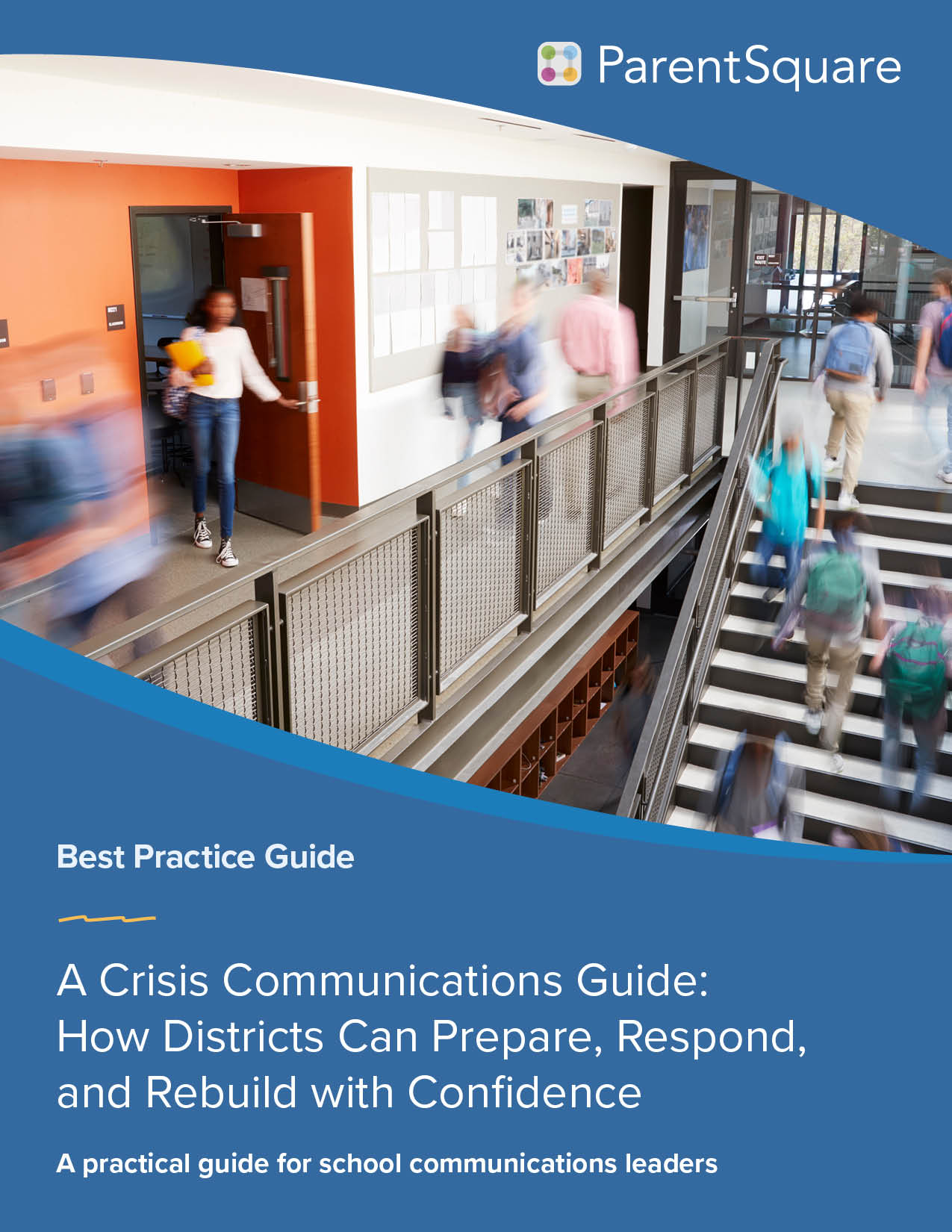
In our recent national survey on the future of school-home communications, we discovered a lot about how schools are communicating with families, including what’s working to keep families engaged and what’s not. While teachers and administrators are often the ones communicating directly with families, technology leadership has an invaluable role in school communications, too. Leaders in these roles are typically the ones who drive the implementation and maintain the management of new communications tools and platforms.
To better understand the role of technology leadership in school communications, we hosted a joint webinar with The Consortium for School Networking (CoSN) and had a discussion with school technology leaders Derrick Brown, Chip Dolce, and Rod Russeau about how they support school-home communications in their positions. They shared their thoughts about the direction of school-home communications post-pandemic and how schools can leverage technology to continue to reach and engage the last 10% of families––those who are hardest to reach and experience the greatest barriers to communication.



How the Pandemic Shifted Communication
According to our Communications Future Survey, 82% of districts have changed how they engage with parents over the past two years. This has had a significant impact on the way tech leaders support their counterparts.
Rod pointed out that two-way communication has become much more common now than before the pandemic. Derrick echoed this sentiment, adding that there is also a greater intentionality behind how teachers are engaging and connecting with families.
Chip said that the pandemic opened a doorway for parents to have unbelievable amounts of access to their child’s learning. Remote learning increased many parents’ involvement and engagement with their child’s learning, giving them more direct access to assignments and learning data. While much of that access has diminished––with many parents returning to their role as a learning support, rather than facilitator––districts are transitioning to tools that still ensure families feel connected and remain engaged outside of the remote learning structure.
Engaging the Last 10% of Families
The families that are hardest-to-reach are an important focus for technology leadership, as these families typically have the most barriers to using technology. Derrick addresses this in his district by doing whatever he can to make sure each student is engaged and working to maintain that engagement. Sometimes that can require hands-on work, like even going door-to-door to engage with students’ families personally.
Chip noted that when it comes to the hardest-to-reach 10% of families, getting accurate data is challenging. Having tools that can adapt and get clean, useful data is essential to engage with these families. Quality tools can help you not only identify the families in need of greater support, but also address the challenges and barriers to engagement.
Data’s Role in Family Engagement Strategy
Data plays an important role in creating a districtwide family engagement strategy. Rod asserted that data consistency and accuracy are critical. Interoperability and various connections rely on the data that technology tools collect. With so much information being transmitted through different technology tools and so many methods to send data, it’s important to have a consistent strategy.
Key Takeaways
Derrick’s main takeaway from the conversation is that the foundation of successfully implementing a technology tool is to collaborate with peers and different departments, get input on different options, and build on that. Set a standard and expectations, then put the tools in place. It’s crucial to put the research and thought in up front to be successful in the long run.
For Rod, the main takeaway is that it’s important to look outward from our personal perspective on technology to determine the “why” and pinpoint the problems and needs we’re trying to address with new technology tools.
“As a technology leader, be aware of what’s going on, and engage with that––through data consistency and application of tools––to try to improve the experience for families,” Rod said.
Chip highlighted that his key takeaway is that the tools are getting better at identifying who the last 10% is, but it’s up to technology leaders to decide how to best address the needs of that population to keep them engaged.
“It’s not just about reaching families but making them feel like a partner in the learning process.”
— Chip Dolce,
Director of Instructional Technology, Palmyra-Macedon Central School District (NY)
This conversation opened a valuable dialogue about the critical role that technology leaders play in ensuring districts equitably and effectively reach every family. To view the conversation in its entirety, check out the webinar recording here.

